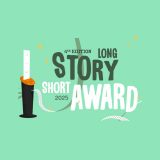Demystifying Academic Librarianship: Instruction Interview with Taylor Greene, Chair of Instructional Services
November 7, 2019
For many Chapman University students, the first interaction with a librarian from the Leatherby Libraries is in the classroom. One of the four key components of academic librarianship, which are being explored in this blog series, is instruction, which is carried out in a number of ways, including a day of library instruction for every First-year Foundations Course (FFC). As classes of first-year students file into LL 305, the Lawrence and Jean Shaffer Library Instruction Room, tucked behind the elevators on the third floor, they come face to face with a librarian, and begin their education in Information Literacy.
Information Literacy, according to librarian Taylor Greene, Chair of Instructional Services, is “being able to basically be a proficient and thoughtful consumer of information.” Living in what is often known as the Information Age, students in the 21st century don’t exactly have a lack of information at their fingertips – but what Information Literacy instruction sessions teach is how to find the most relevant information, evaluate information for accuracy, bias, and relevance, and use that information most successfully in college and beyond.
A library instruction class, also known as a BI (for Bibliographic Instruction) usually begins with an activity geared towards evaluating resources. Because we have so much information readily available to us at all times, in the form of articles, books, social media posts, and more, the crucial first step is learning whether or not a source is appropriate to use in a given situation, typically an academic paper or research project. Students are taught the “TRAAP Method,” to consider five important components of a source: its Timeliness (how recently was it published?), Relevancy (how closely does it relate to your research question?), Authority (does the author have any credentials that give them more authority?), Accuracy (how accurate does the source appear to be?), and Purpose (does the source seem to be written with a clear agenda or bias, or to present information in a more neutral manner?). Finally, students think about whether an article comes from a scholarly source (like a peer reviewed academic journal) or a popular source (like a popular website). Once students feel equipped to evaluate a resource, they’re off and running!
Library instruction classes don’t just teach students how to evaluate resources. Also important is learning how to use the Leatherby Libraries resources to find excellent sources, whether by searching for a physical book on our shelves, or an article offered through one of our electronic databases or subscriptions. BI sessions also explain what academic librarians do (much like this blog series), where to get help (more on that in future posts on Reference and Subject Liaison work), and finally, citation formatting and guidelines.
Bibliographic instruction sessions are a required part of all FFCs, but your first year is not the only chance you have to get some excellent information literacy instruction. Many professors choose to ask their Subject Liaison librarians to give sessions to their classes beyond the first year. Just like first-year students at Chapman are encouraged to enroll in an FFC that’s different from their intended major or area of study, librarians teach a wide range of FFC library instruction sessions, regardless of the course topic. But in classes beyond the FFC, like classes you take for your major, each librarian has one or more subjects (for which they are known as the Subject Liaison Librarian) in which they are focused, and they will work with faculty in those departments who request additional information literacy classes for their students.
For example, Taylor is the Subject Liaison Librarian for all of the College of Performing Arts, which includes the Music Department. Unique on the Chapman campus, the Music program has a required class on information literacy for sophomores, called Music Information Literacy. Taylor thoroughly enjoys teaching this class, in which he gets to tailor (no pun intended!) his instruction to sources that Music majors are more likely to need for their studies, and work with them more in depth than librarians can in one 75-minute BI session with an FFC class. “When we work with a class,” he says, “we can structure our lesson around that course.”
Librarians really do want to help students excel on their research projects, from helping them find the perfect book in the stacks, to teaching them to be able to discern which articles will help them the most for their research project. If you feel like it’s been too long since you had your library instruction session in your FFC, or that you’d like an additional session focused on a class you’re taking right now, ask your professor to reach out to a librarian. They’ll be happy to come help guide you, and your classmates, to higher levels of information literacy and research success!


